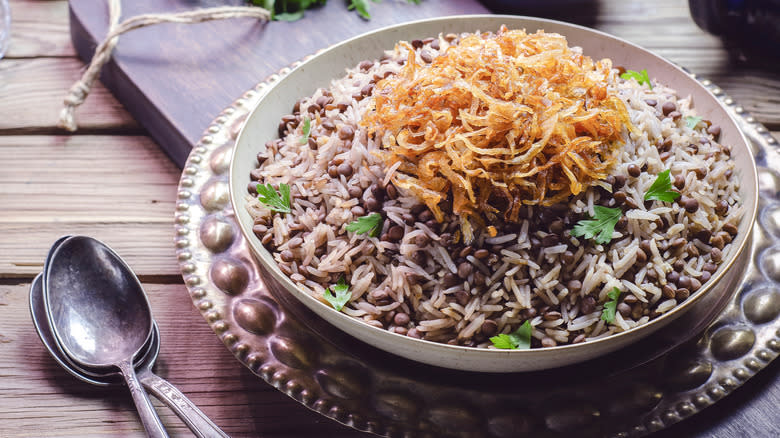Boil Different Grains Together For More Interesting Textures

One-pot meals are always a welcomed convenience that fits perfectly into our busy lives and tight schedules. While stews, pasta, sheet pan meat, and veggies all fall under this efficient category, you can get even more creative with less effort. Boiling different grains together in one pot is a hands-off and simple method to create more depth of texture in your dish.
The list of grains and beans available at local grocery stores and specialty markets continues to expand with the help of globalization; Rice, potatoes, and pasta are just the tip of the iceberg. There are even dozens of varieties of each major grain category to mix and match in one pot; A stroll down the rice aisle will reveal purple, white, and black sticky rice, long grain varieties like basmati, jasmine, and American white rice, and creamy medium grain arborio.
Ancient grains like quinoa, amaranth, millet, teff, and sorghum offer unique textures and are highly nutritious. Thus, You can upgrade your meal by supplying complementary textures and a more thorough nutritional profile. For example, throwing lentils and basmati rice in the pot together will produce a meal rich in carbohydrates and a complete protein.
Most grains and dried legumes require boiling, simmering, steaming, or both. Take advantage of these similarities to create an easy one-pot main course or side dish. Throw in your favorite seasonings, broths, or aromatics for a dish that is both rich in texture and flavor.
Read more: 30 Healthy Snack Ideas That Won't Ruin Your Diet
Grain Combinations And Tips

While boiling two or more grains in one pot sounds like a novel, if not daunting undertaking, it's the norm in many culinary cultures. The popular Middle Eastern dish Mujadara boils rice and lentils in the same pot, with a sumptuous garnish of fried, caramelized onions. Korean purple rice uses a mixture of black, sweet sticky rice, and short-grain white rice, for a creamy foundation with pleasant bits of chewier, harder grains.
When boiling two or more grains and legumes together, you have various avenues to maximize the texture of every element; You can either choose grains or legumes with identical cooking times or stagger the cooking times by adding short-cooking grains to a boiling pot of slow-cooking grains half or a portion of the way through.
A recipe for orzo and farro salad has you add the quick-cooking orzo to a pot of boiling orzo halfway through its cooking process, to achieve a decadent contrast of soft chewy orzo and hard pops of farro in each bite. Plus, you have time to create a vinaigrette and dice raw vegetables and nuts for added flavor and crunch.
For a delicious and nutritious breakfast, you can boil equal parts quinoa and amaranth in a pot. Since both grains have similar cooking times, you won't have to worry about adding them separately.
Read the original article on Tasting Table.


